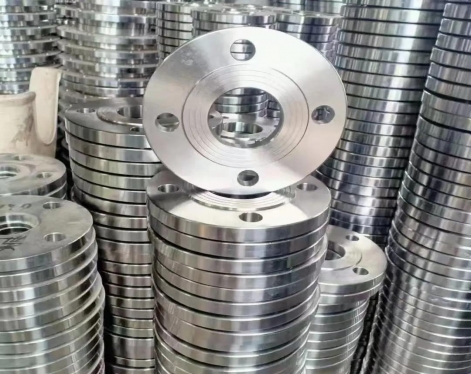Definition
The austenitic seamless pipe is softened by solution treatment. Usually, the seamless pipe is heated to a temperature range of 950-1150 ° C, and kept for a period of time, so that the carbides and various alloying elements in the material are completely and uniformly dissolved. In the austenite structure, after rapid quenching and cooling, carbon and other alloying elements will not have time to precipitate, so that a high-purity austenite structure can be obtained, which is called solid solution treatment.
Effect
1) It is very important for the raw material to keep the structure and composition of the seamless pipe uniform, because the rolling temperature and cooling speed of each section of the hot-rolled wire rod are different, which can easily lead to inconsistent structure. At high temperature, the atomic activity will be intensified, the σ phase will dissolve, and the chemical composition will tend to be uniform. After rapid cooling, a highly uniform single-phase structure can be obtained.
2) Eliminate work hardening, which facilitates continued cold working. After solution treatment, the distorted lattice will recover, the elongated and broken grains will recrystallize, the internal stress will also be eliminated, the tensile strength of the seamless pipe will decrease, and the elongation will increase.
3) Restore the inherent corrosion resistance of seamless pipes. Because cold working causes carbide precipitation and lattice defects, the corrosion resistance of seamless pipes is reduced. After the solution treatment, the corrosion resistance of the seamless pipe is restored to the state.
Solution treatment requirements
Temperature requirements
Generally speaking, the solution temperature of seamless pipe should be increased correspondingly for the grades with many kinds of alloy elements and high content. Especially for steel with high content of manganese, molybdenum, nickel and silicon, the softening effect can only be achieved by increasing the solution temperature and making it fully dissolved. However, in stabilized steel, such as 321 stainless seamless steel pipe, when the solution temperature is high, the carbides of the stabilized elements are fully dissolved in the austenite, and in the subsequent cooling, they will precipitate at the grain boundaries in the form of Cr23C6, causing intergranular corrosion. In order to prevent the carbides (TiC and NbC) of the stabilizing elements from decomposing and solid solution, the lower limit solution temperature is generally used.
Quality requirements
1) Strictly implement the heat treatment temperature system of the solution furnace to make the mechanical properties of the seamless pipe meet the requirements.
2) Obtain a single austenite structure at room temperature to enhance corrosion resistance, weaken the tendency of intergranular corrosion and destroy the dense surface oxide scale.
3) Eliminate the residual stress after cold deformation of the seamless pipe.
The austenitic seamless pipe is softened by solution treatment. Usually, the seamless pipe is heated to a temperature range of 950-1150 ° C, and kept for a period of time, so that the carbides and various alloying elements in the material are completely and uniformly dissolved. In the austenite structure, after rapid quenching and cooling, carbon and other alloying elements will not have time to precipitate, so that a high-purity austenite structure can be obtained, which is called solid solution treatment.
Effect
1) It is very important for the raw material to keep the structure and composition of the seamless pipe uniform, because the rolling temperature and cooling speed of each section of the hot-rolled wire rod are different, which can easily lead to inconsistent structure. At high temperature, the atomic activity will be intensified, the σ phase will dissolve, and the chemical composition will tend to be uniform. After rapid cooling, a highly uniform single-phase structure can be obtained.
2) Eliminate work hardening, which facilitates continued cold working. After solution treatment, the distorted lattice will recover, the elongated and broken grains will recrystallize, the internal stress will also be eliminated, the tensile strength of the seamless pipe will decrease, and the elongation will increase.
3) Restore the inherent corrosion resistance of seamless pipes. Because cold working causes carbide precipitation and lattice defects, the corrosion resistance of seamless pipes is reduced. After the solution treatment, the corrosion resistance of the seamless pipe is restored to the state.
Solution treatment requirements
Temperature requirements
Generally speaking, the solution temperature of seamless pipe should be increased correspondingly for the grades with many kinds of alloy elements and high content. Especially for steel with high content of manganese, molybdenum, nickel and silicon, the softening effect can only be achieved by increasing the solution temperature and making it fully dissolved. However, in stabilized steel, such as 321 stainless seamless steel pipe, when the solution temperature is high, the carbides of the stabilized elements are fully dissolved in the austenite, and in the subsequent cooling, they will precipitate at the grain boundaries in the form of Cr23C6, causing intergranular corrosion. In order to prevent the carbides (TiC and NbC) of the stabilizing elements from decomposing and solid solution, the lower limit solution temperature is generally used.
Quality requirements
1) Strictly implement the heat treatment temperature system of the solution furnace to make the mechanical properties of the seamless pipe meet the requirements.
2) Obtain a single austenite structure at room temperature to enhance corrosion resistance, weaken the tendency of intergranular corrosion and destroy the dense surface oxide scale.
3) Eliminate the residual stress after cold deformation of the seamless pipe.









